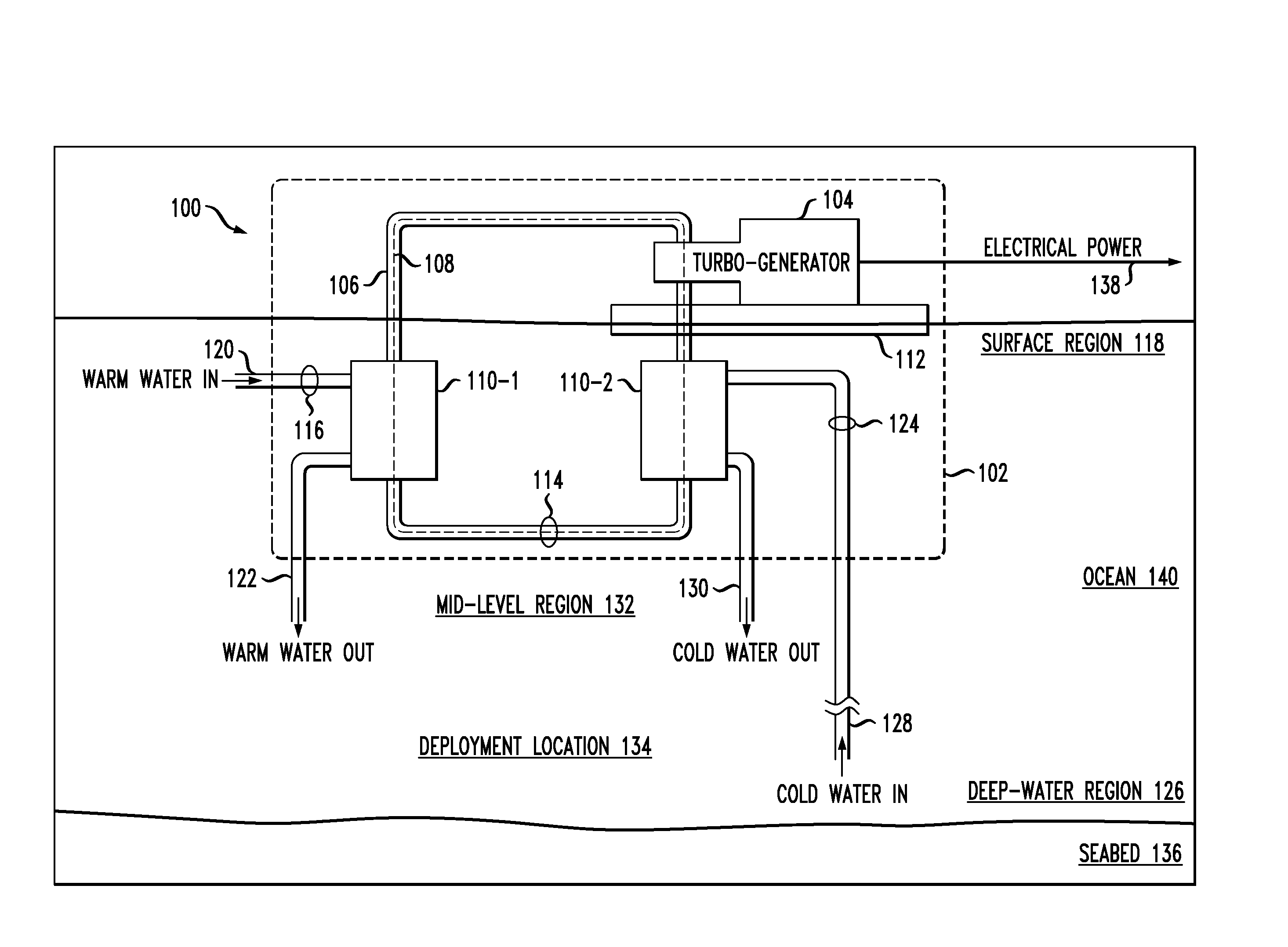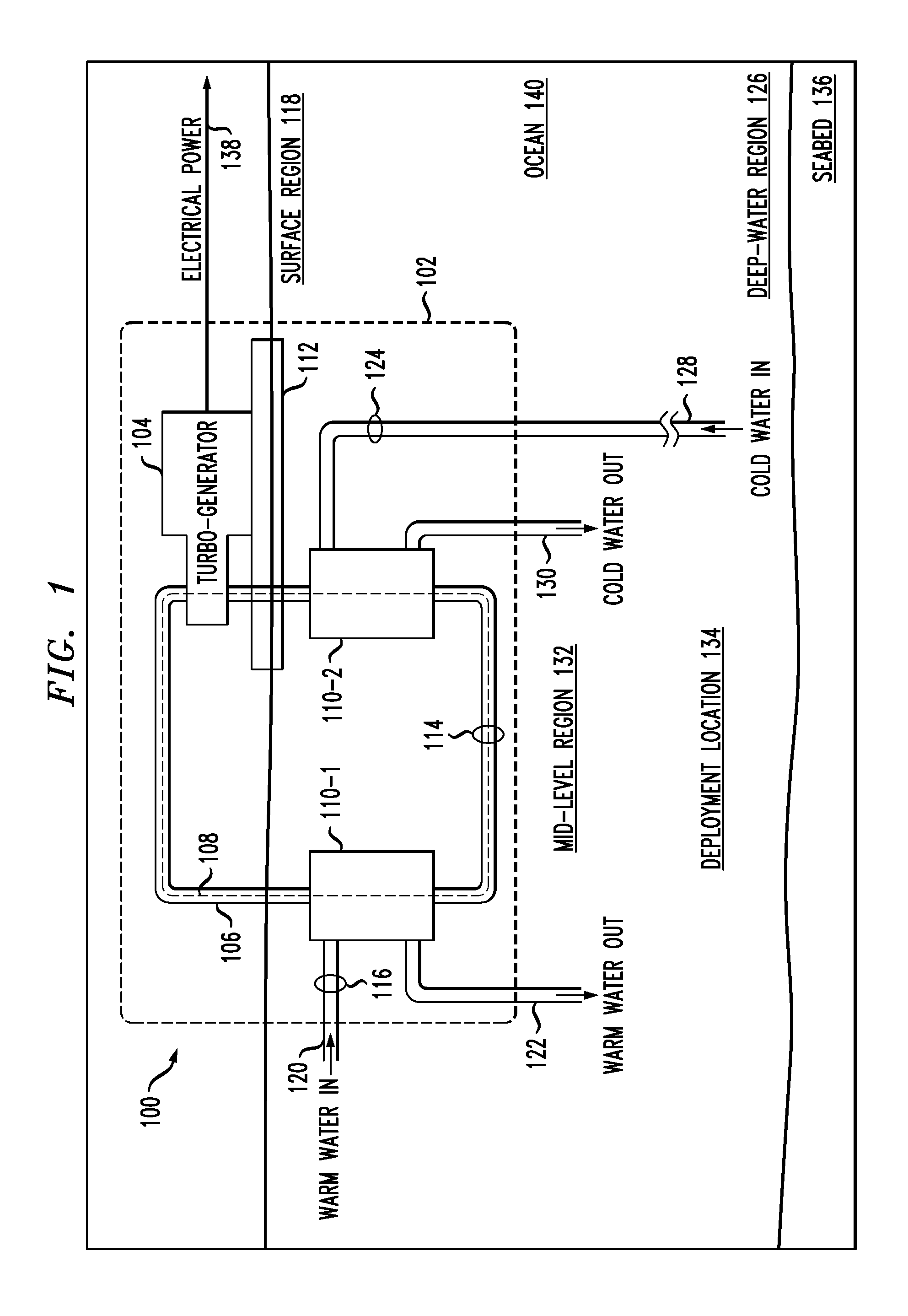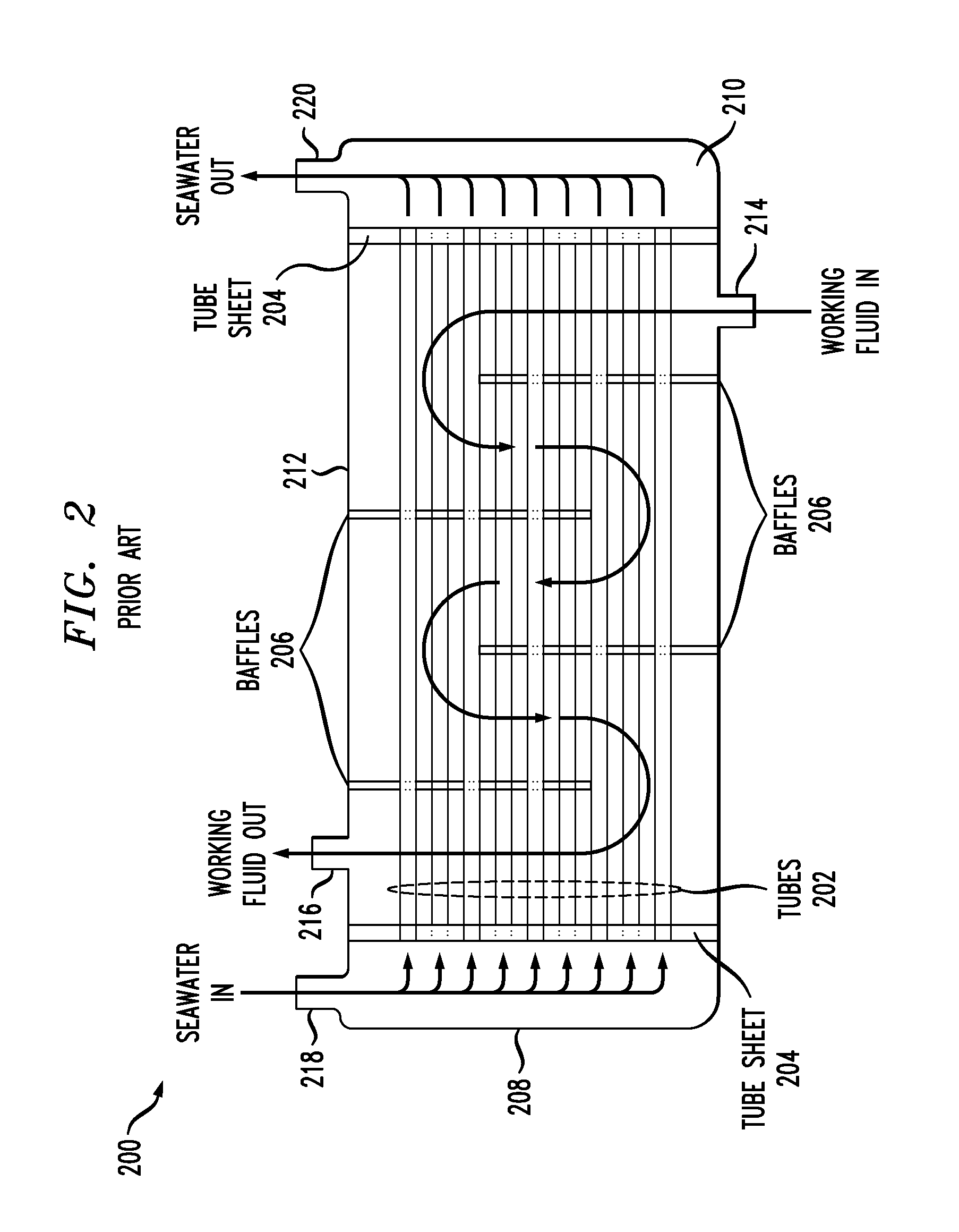Helical Tube Bundle Arrangements for Heat Exchangers
a heat exchanger and bundle arrangement technology, applied in the field of shellandtube heat exchangers, can solve the problems of limiting the use of these systems in marine applications, contributing to the capital cost of otec plants, and high capital cost of these systems,
- Summary
- Abstract
- Description
- Claims
- Application Information
AI Technical Summary
Benefits of technology
Problems solved by technology
Method used
Image
Examples
Embodiment Construction
[0032]FIG. 1 depicts a schematic diagram of an OTEC power generation system in accordance with an illustrative embodiment of the present invention. OTEC system 100 comprises offshore platform 102, turbogenerator 104, closed-loop conduit 106, evaporator 110-1, condenser 110-2, hull 112, pumps 114, 116, and 124, and conduits 120, 122, 128, and 130.
[0033]Offshore platform 102 is a tension leg offshore platform comprising buoyant hull 112, which includes a deck, caissons, and pontoons. The hull is supported above seabed 136 by rigid tension legs that are anchored to seabed 136 at deployment location 134. For clarity, the deck, caisson, pontoons, and tension legs are not shown in FIG. 1.
[0034]In some embodiments, offshore platform 102 is deployed at a deployment location in a body of water other than an ocean (e.g., a lake, sea, etc.). In some embodiments, offshore platform 102 is an offshore platform other than a tension leg offshore platform, such as a semi-submersible, spar, drill shi...
PUM
 Login to View More
Login to View More Abstract
Description
Claims
Application Information
 Login to View More
Login to View More - R&D
- Intellectual Property
- Life Sciences
- Materials
- Tech Scout
- Unparalleled Data Quality
- Higher Quality Content
- 60% Fewer Hallucinations
Browse by: Latest US Patents, China's latest patents, Technical Efficacy Thesaurus, Application Domain, Technology Topic, Popular Technical Reports.
© 2025 PatSnap. All rights reserved.Legal|Privacy policy|Modern Slavery Act Transparency Statement|Sitemap|About US| Contact US: help@patsnap.com



